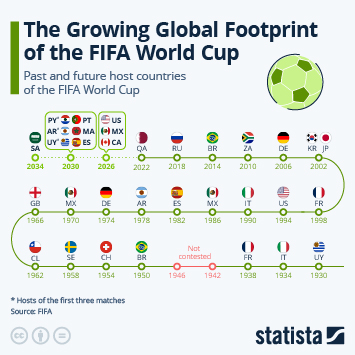Over the past two decades, professional football has seen an unprecedented influx of money, reshaping the landscape of the sport on a global scale. The surge in financial means and change in the balance of power between clubs and leagues can be attributed to several key factors, notably the rapid growth of broadcasting deals and the emergence of billionaire owners and what are effectively state-sponsored clubs.
The English Premier League in particular has seen a staggering increase in broadcasting rights fees over the past two decades, with the amount paid for the league’s global media rights roughly quadrupling from $3.16 billion for the 2007-2010 period to $12.85 billion for the 2022-2025 period. This influx of broadcasting revenue has provided clubs with previously unimaginable financial resources, allowing them to invest heavily in player transfers, wages and state-of-the-art facilities.
In addition to broadcasting deals, the rise of billionaire owners has played a pivotal role in reshaping football's financial landscape. Wealthy individuals from various industries have seized the opportunity to acquire football clubs, viewing them as lucrative investments with vast potential for growth.
Furthermore, the emergence of de-facto state-sponsored clubs has further intensified the financial arms race in football. Clubs like Manchester City and Paris Saint-Germain, majority-owned by government-backed investment funds from Abu Dhabi and Qatar, respectively, have transformed into financial powerhouses capable of outspending their competitors on transfer fees and wages. It has enabled them to assemble star-studded squads and compete at the highest levels of domestic and European competition, with Manchester City’s 2023 treble the latest testament to their financial and sporting superiority.
While the large influx of money has undoubtedly brought excitement and spectacle to the world of football, it has also raised concerns about financial fair play and the growing disparity between rich and poor clubs and leagues. Our latest Racing Bars video shows not only how revenue has increased for the world’s “richest” football clubs, but also tells the story of how the balance of financial power has shifted between leagues and clubs during the past two and a half decades.




















